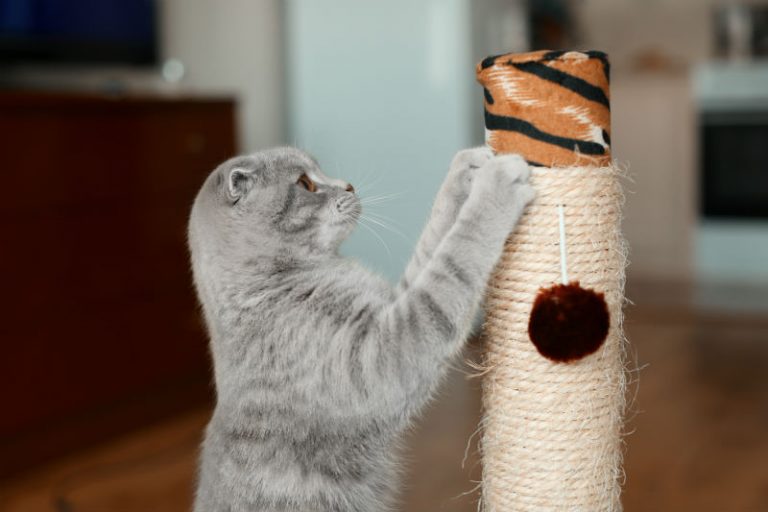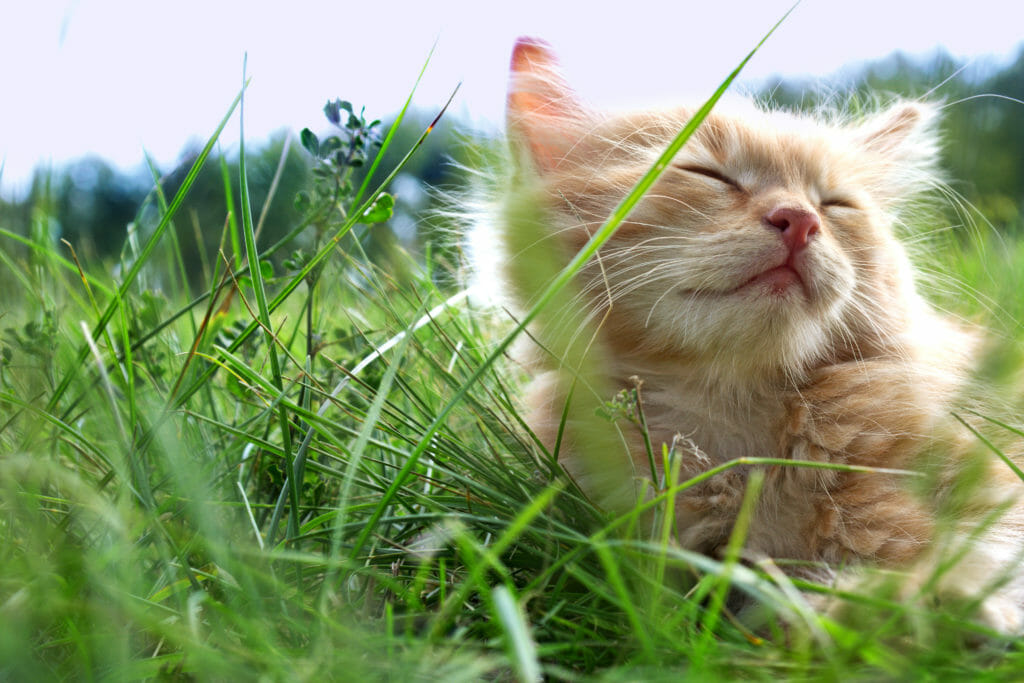Scratching is instinctual for them. They do this to keep their front nails groomed, to leave marks for territory marking, and to stretch out their muscles. You do not want to punish this behaviour as it is natural for them. Instead – you want to encourage it in the right places.
So what do you do?
Provide lots of scratching posts and other alternatives. You should have at least one of each option in the home. So a twice based post, a carpeted cat tree, and a cardboard scratcher. More than 3 are encouraged, and they should be placed around the home. Ideally, you would have a scratching option in each room.
Kittens – Encourage scratching on these options early on. This will help to deter negative behaviour in the future. When they start to scratch something unwanted, calmly but immediately, move them to the cat tree. Redirection is a great way to show them the proper behaviour without scolding them.
Adult cats – Usually this behaviour has already been ingrained in them so it may take more effort to change that behaviour. Follow the same redirection as mentioned in the kitten section, but also encourage its use by adding catnip or treats to the tree. You want to ensure that this is a positive area for them. Placing the scratchers in low traffic areas of the home is best; this allows less room for them being startled by something which could discourage them from using the scratching posts.
Detering – To deter a cat from scratching unwanted areas you can place double sided tape on those places. Cats are big on texture/feeling and do not appreciate the stickiness on their feet. Tin foil is another option as they do not like the sound or feeling (it’s just less aesthetically pleasing for most owners).
Feliscratch by Feliway – There is a new product from the makers of Feliway. This product promotes healthy/appropriate scratching. It is a simulated version of the pheromone that cats leave behind when they scratch and encourages them to scratch that spot again vs. seeking out different areas to scratch.
Nail trims and nail caps – Keeping cats nails short is good for multiple reasons, but in this circumstance, it helps to prevent more damage from being done. Nail caps (like soft paws), can help prevent damage as it prevents their nails from picking at the fabric or carpeting, but they are still able to perform the action, which is a natural outlet for them.
If you are unable to perform a nail trim yourself at home contact local groomers or your vet clinic, this is not only for behaviour but for general health and safety of your cat and your family.
Sidenote – Declawing cats is now banned in Nova Scotia. We are the first province to officially ban declawing in cats. Though it is banned and we are unable to perform this procedure anyway – we do not recommend seeking to have it done out of province as you may cause other concerns. This often leads to behavioural concerns long term as it can cause pain post surgery and lead to concerns such as pillow paw. When you declaw, you are removing the ability to play out on some of their instincts which, yes will lead to less destroyed furniture, but may lead to aggressive, uncomfortable cats which leads to other equally or worse behavioural problems in the long run. Though this is not the popular answer – if you do not want to deal with these instincts that come along with owning a cat it’s probably best to not adopt a cat. Opt to adopt a pet that is lower maintenance such as fish or pocket pets. They are less destructive as they are detained in cages, aquariums or terrariums.
Written by: Blair Lutes




